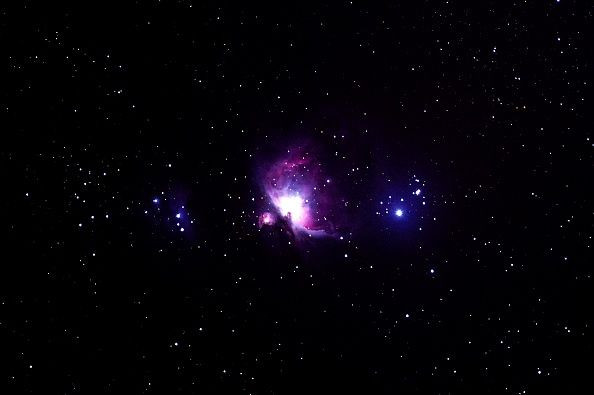NASA Discovers Red 'Space Butterly' That Could Explain How Stars And Aliens Are Born

NASA's Spitzer Space Telescope captured a "butterfly" nebula that appears to reveal how the circle of life of stars happens.
Called the Westerhout 40 (W40) officially, the red "space butterfly" is actually a nebula that demonstrates how stars form from the very destruction that created them. The nebula, a cloud of gas and dust in space, is where stars are born. What appeared to be two butterfly wings are actually "bubbles of hot, interstellar gas blowing from the hottest, most massive stars in this region."
The wings of the W40 is a material ejected from a dense cluster of stars that is in the middle of the sides. The W40 IRS 1a is around the center of the star cluster. It is also considered the hottest and most massive of the lot. The W40 is as far from the sun as the Orion Nebula, which is approximately 1,400 light-years.
According to NASA, W40 shows how stars form from the destruction of clouds that prompted their genesis. The force of gravity, which is inside the massive clouds of dust and gas in space, pulls objects together to form dense clumps. When clumps achieve a specific critical density, it results in the formation of stars at their core. Bubbles like the W40 form when radiation and wind from massive stars combine with the remnants of a star's explosion. However, there are also instances when such processes emit gas and dust that break up dense clumps. This either prevents or reduces the formation of new stars.
As NASA spots more of these objects, the journey into interstellar space, which refers to the space between stars, has also started. Specifically, NASA already sent its Voyager 1 and Voyager 2 probes into interstellar space. It might be too far out to send any humans into it, but NASA claims that scientists and engineers have already started "developing skills and technologies that might help us get there one day."
While NASA doesn't plan to send new spacecraft into interstellar space, there is an ongoing effort to explore new ideas and concepts that will help understand the possibilities and opportunities to discover something valuable to science. NASA has also been working on other initiatives search for more areas and stars that could give more information about new alien life.
Scientists have already started cataloguing stars for possible alien exploration. With its planned missions to the Moon and Mars, it all adds up to the bank of information that can help understand whether there is really life outside Earth.
© Copyright IBTimes 2025. All rights reserved.





















